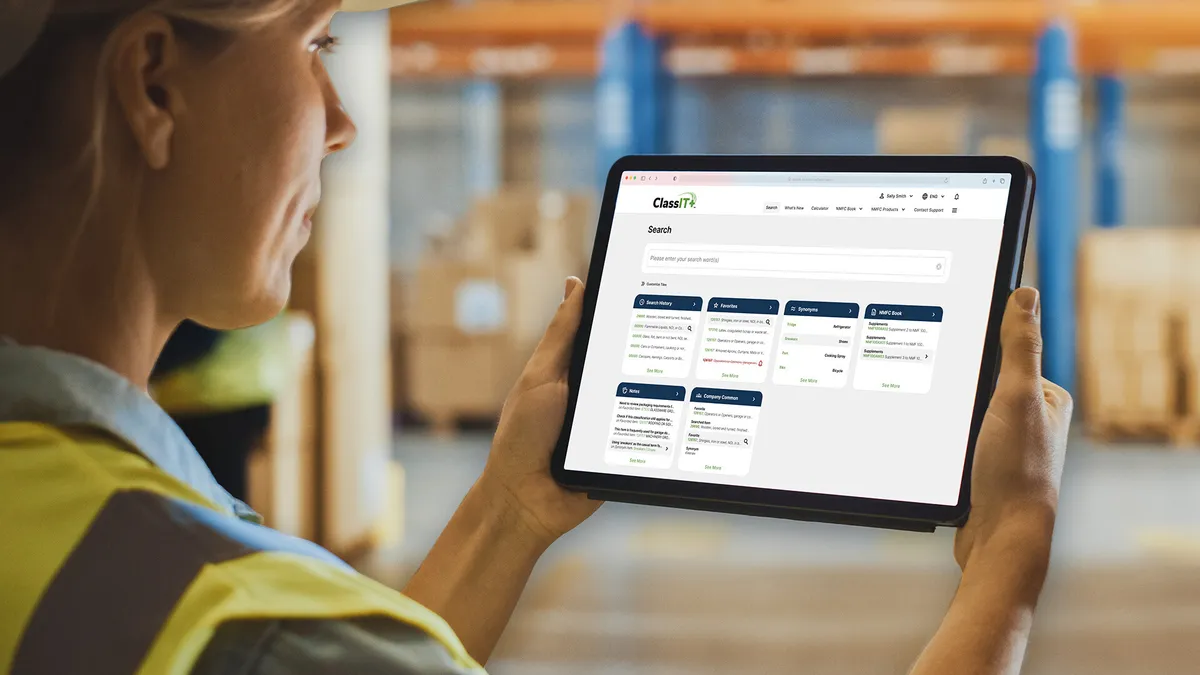If you’re leading less-than-truckload (LTL) logistics, operations, or procurement, there’s a good chance freight classification doesn’t always make your top five priorities. But it should—because getting it wrong can quietly erode margin, inflate transportation spend, and strain carrier relationships.
Across the supply chain, teams are seeing the downstream effects of misclassified LTL freight:
- Back-billing after delivery that throws off budget forecasts;
- Delays and re-routes that disrupt just-in-time strategies;
- Rising customer service costs tied to shipment discrepancies; and
- Mismatched National Motor Freight Classification (NMFC®) codes that trigger compliance reviews or audits.
Sound familiar?
Why LTL Freight Classification Needs Executive Attention
For logistics executives and demand planners, a single misclassification can alter shipment schedules, increase dimensional charges, or even push SKUs into entirely new handling protocols.
For procurement and materials management leaders, it shows up in carrier disputes, retroactive charges, and erosion of negotiated rates.
For operations and fulfillment teams, it’s a root cause of service failures and OTIF misses.
A national distribution VP we spoke with described it this way:
“We’d optimized everything from route planning to pallet configurations—but our freight classifications were still driving unpredictable accessorials. That was the blind spot.”
What Leading Supply Chain Teams Are Doing Differently
Executives are shifting freight classification from a reactive cost center to a strategic control point. Here’s how:
- Auditing frequently used NMFC codes and cross-referencing against updated definitions;
- Collaborating across procurement, logistics, and warehouse ops to close data gaps;
- Training cross-functional teams on what triggers reclassifications; and
- Implementing digital tools that flag classification changes and streamline lookups.
These actions don’t just protect your bottom line—they give your teams the confidence to manage freight dynamically as products evolve.
How ClassIT+ Supports Executive-Level Freight Accuracy
That’s where ClassIT+™, built by the National Motor Freight Traffic Association, Inc. (NMFTA)™, steps in. It’s a next-generation freight classification tool designed for real-time visibility and team collaboration. Instead of relying on outdated PDFs or siloed systems, ClassIT+ delivers:
- Fast, intuitive search powered by a modern interface;
- Mobile access for warehouse or logistics teams on the go;
- Favorites, change alerts, and notes to support consistent classification across departments; and
- Built-in NMFC updates to reduce risk of using outdated codes.
As Keith Peterson, NMFTA’s director of operations, said:
“ClassIT+ helps shippers, 3PLs, and carriers find the information they need faster and with more confidence. It’s designed for the way today’s teams actually work.”
As a leader responsible for supply chain continuity and cost control, freight classification may not be flashy—but it is foundational. The more proactive your organization is, the fewer surprises show up on your shipping invoices and customer escalations.
If your team is still relying on static resources or playing catch-up with NMFC changes, now’s the time to explore what’s next.










